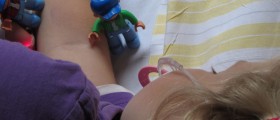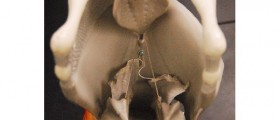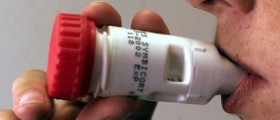
Croup is a condition caused by the inflammation of the upper airways, which involves larynx or the voice box and trachea or the windpipe. It is characterized by a typically barking cough or hoarse voice. Croup is mainly a childhood disease. It particularly affects children between six months and three years of age, although it can be seen in older children too.
In most cases, the cause of croup is viral. It can be the parainfluenza virus, adenovirus or respiratory synctycal virus.
Croup is usually a disease that follows an upper respiratory infection and it generally goes away in three to seven days. However, some cases can be severe and potentially life-threatening.
Symptoms
Croup may start with the symptoms of common cold, such as mild fever, runny or stuffy nose, sneezing, fatigue and headache. As the upper airway becomes inflamed, the typical symptoms of croup, meaning barking cough and hoarseness, set in. Stridor, or the high-pitched noise coming from the windpipe as the child breaths, is caused by even more increased swelling of the upper airway. Breathing may be rapid and shallow, with skin retractions between the ribs when breathing. In severe cases the child may become cyanotic due to the lack of oxygen.
These symptoms usually worsen at night or when the child cries. The symptoms last for three to seven or ten days. Chronic croup, which persists for more than several weeks, is extremely rare and if the croup-like symptoms persist for a long time, they may actually indicate a whole different problem involving the airways.
However, croup in some children tends to reoccur. This is typical for children who frequently suffer from cold or flu.
Treatment
Since croup is mainly viral, there is no point in prescribing antibiotics for it. In addition, the symptoms are generally mild and the treatment should be focused on accelerating the recovery and alleviating the cough and hoarseness.
Many parents have found that breathing moist air helps with croup. This can be achieved by using indoor vaporizers and humidifiers and inhaling vapors from a bowl of hot water. In cooler months, taking the child for a short walk outside, in fresh air, is also helpful. Drinking plenty of fluids is highly recommended.
In more severe cases where the child has difficulty breathing, doctors may prescribe or administer epinephrine or adrenalin, which quickly reduces the swelling and opens up the airway. If the child exhibits signs of cyanosis, doctors will probably administer oxygen.















-And-Breathing-Problems_f_280x120.jpg)

Your thoughts on this
Loading...